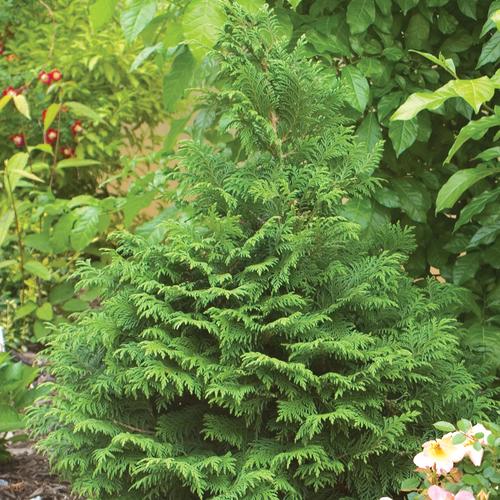Best Evergreen Trees to Grow in New Jersey
For those who appreciate plants, evergreen trees are typically used to create a natural landscape. The magnificent evergreen trees native to New Jersey can enhance the appearance of your yard. As you are aware, it will be simpler to maintain native plants if you grow them. There won't be any adjustment period or difficulty locating suitable soil for the location. Evergreen trees give color all year long and address landscaping problems. Knowing certain evergreens' traits and advantages will help you decide which evergreen trees to plant in New Jersey and how they can enhance your landscape.
10 Evergreen Trees to Grow in New Jersey
Evergreen trees give your landscape year-round color. In the dead of winter or the sweltering heat of summer, most but not all evergreens have a similar appearance in hue. They are adaptable, some can be used as specimens, while others work well as hedges or privacy screens.
Need help with which is best for you? To find out more about each kind, scroll down below.
1. White Pine
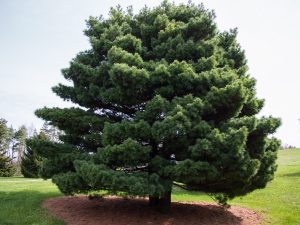
Given that it is a native of New Jersey as well, this is most likely the common evergreen. Although heavy, this tree is the least heavy compared to the others. This native plant is simple to care for and has straight needles. The 200-foot-tall largest white pine ever was found in New Jersey in 1990. Additionally, this evergreen can survive and thrive in the majority of soil types in NJ. Consequently, picking the ideal soil for planting them would be simple.
Older needle clusters are deciduous; they don't always shed their leaves in the fall. White pines typically preserve their needles for two to three years. Older needles turn color and fall in the autumn. However, the tree's growth from the current season is still present for year-round splendor.
Unfortunately, pest and disease issues are common with eastern white pines. If you wish to employ this tree in your landscaping, it is advised that you make sure blister rot, a potentially fatal tree disease, isn't widespread there.
This tree prefers full sunlight and requires a daily minimum of four hours of direct sunlight. It struggles in soils that are frequently moist or prone to drought. The USDA plant hardiness zones 3-8 are the optimum ones for the Eastern white pine.
2. Serbian Spruce
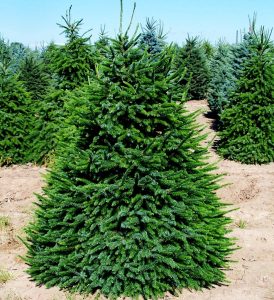
A medium-sized tree is available for your yard. This one is a natural plant that is very tolerant to pollution. If you decide to grow Serbian Spruce, they prefer moist soil. You don't need to exert more effort to have this evergreen because it is simple to maintain. Serbian spruce is an excellent choice for an ornamental tree due to its slender form and columnar shape.
3. Leyland Cypress
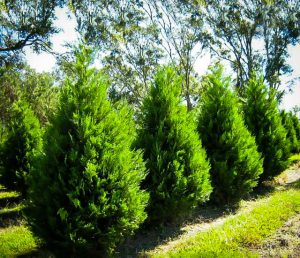
Leyland Cypress will be your solution if you're looking for some plants to add privacy to your yard. You can plant a few cypress trees, which will develop quickly and be ready to serve as a backdrop in front of your home.
Additionally, you don't need to worry about the lighting because a location with direct sunlight will work best for them. Just be sure you can frequently trim them to keep them in good shape.
4. White Fir

The straight trunk of this evergreen generates a crown that resembles a spire. Typically, the foliage has short, slender needles. The foliage is bright green when the trees are young and becomes drab as they age. You can get a whiff of citrus aroma from White Fir through the branches. If you can feel the breeze in the spring, that's good.
5. Cryptomeria
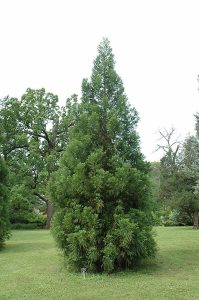
The straight trunk of this evergreen generates a crown that resembles a spire. Typically, the foliage has short, slender needles. The foliage is bright green when the trees are young and becomes drab as they age. You can get a whiff of citrus aroma from White Fir through the branches. If you can feel the breeze in the spring, that's good.
6. American Holly
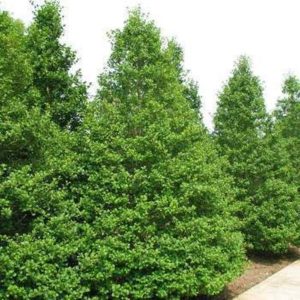
Evergreen plants with red berries are local to New Jersey. Another name for American holly is Ilex Opaca. This natural evergreen supports local animals because it offers nectar, which butterflies and moth larvae utilize as food. The host plants will come to your yard during the spring when the white blossom, which holds nectar, blooms. Up until winter, the crimson berries will be visible. So that you can either let the animal eat what it wants or use it to make an ornamental Christmas. Every spring, the American holly loses some of its older leaves as new ones emerge.
The American holly matures to a height of 15 to 30 feet. However, the species grows slowly, making it a poor choice if you want to establish privacy quickly. Although it can handle moist soil, this tree grows best in well-drained soil. It prefers some shade or direct sunlight. Make sure your child or dog doesn't eat the berries or leaves if you plant this tree in your yard. However, birds can safely enjoy these berries as a delightful treat. Hardiness zones for American hollies range from 5 to 9.
7. Norway Spruce

The open branches, despite their size, will add a fresh accent to your yard. People frequently utilize this native plant as a natural Christmas tree since it best embodies the holiday tree. This bush enjoys both full sun and light shade. Since they require little maintenance, planting them does not require more work. It can grow well in clay or sandy soil and thrives in damp environments, making it one of the hardy evergreens.
The adult tree may reach a height of 60 feet or more. It won't take long for you to appreciate this tree's privacy if you move into a new building or improve your garden. Additionally, other landscaping might be shielded from disturbing winds by its dense construction.
This spruce tree has a high level of resistance to illness and pest issues. Deer won't want to gnaw on your tree because it has sharp needles and little nutritional value. Although it can withstand little shade, this tree needs at least six hours of sunlight daily. It can withstand some drought. USDA plant hardiness zones 3 through 7 support its growth.
8. Green Giant Arborvitae
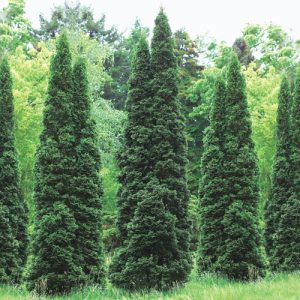
You can plant a variety of Arborvitae species as Jersey trees. You can use it to add highlights to your yard, create a privacy screen, or simply create a new location to look at. Most of them can tolerate some shade but prefer full sun.
Unless the species is small, these are native plants that grow quickly. You are seeking an arborvitae that requires little upkeep. If you have Aurea Arborvitae in your garden, you can notice the golden yellow foliage. Arborvitae hedges offer a lot of privacy. However, this arborvitae is also a strong specimen tree.
9. Southern Magnolia Tree
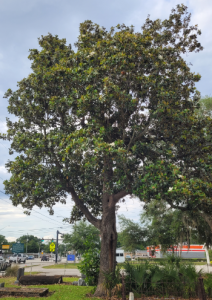
The southern magnolia tree is an evergreen tree with glossy, big leaves with broad leaves. Furthermore, this attractive tree is not afraid to take center stage in your landscape.
Late April brings about the arrival of its magnificent, deeply fragrant blooms, which can reach a diameter of 12 inches. Family and friends will want to get close to the fragrant, creamy-white blossoms. In the spring, after the fresh, green leaves have already emerged, often just before flowering, older, browning, and yellowing leaves fall off.
The southern magnolia tree can reach a height of 60 to 80 feet and thrives in direct sunlight or light shade. In rich, wet soil, it thrives. The 6a–10a range is the USDA plant hardiness zone.
10. Inkberry
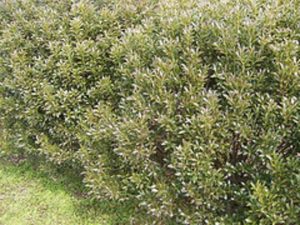
It is referred to as an evergreen holly. Small, greenish-white flowers can be found on this evergreen in New Jersey. As it blooms, the nectar from the flower will be a favorite for the wildlife, such as bees, just like other hollies plants. And the birds will particularly like the blackberry-like berries in the winter. This plant should be in your rain garden!
Conclusion
This spring, think about planting native New Jersey evergreen trees to improve the look of your landscaping and raise the value of your home. The incredible range of evergreen tree species, each with their distinctive size, leaves, and colors, can serve as a stunning focal point and a way to block off obtrusive sounds or sights.
Establishing solitude offers protection and seclusion, whether you have a little urban yard, a suburban lot, or a large country property. Trees are an easy way to hide unattractive views and keep neighbors from peeping into your yard.
When selecting trees, take into account the following:
1. Hardiness
2. Ease of maintenance
3. Growth rate
4. Amount of maintenance required
5. How much space is needed for trees to mature
6. Columnar or dwarf trees are more suited to smaller urban lots
7. Bigger specimens can make a stunning statement on a larger parcel
Trees can also reduce a property’s utility costs and bring wildlife to your backyard.

